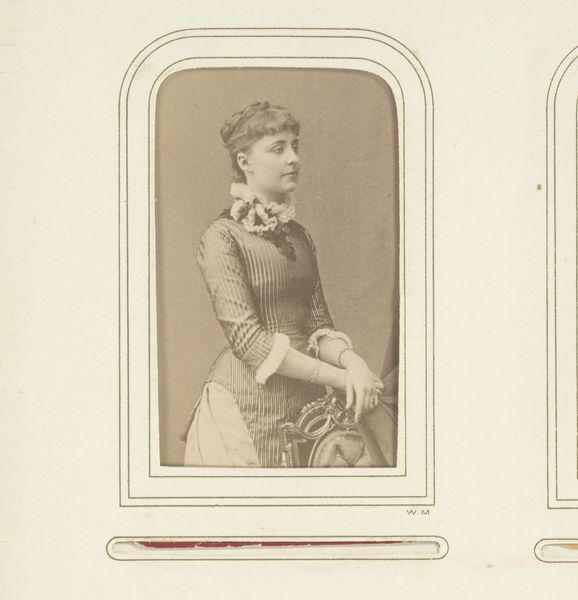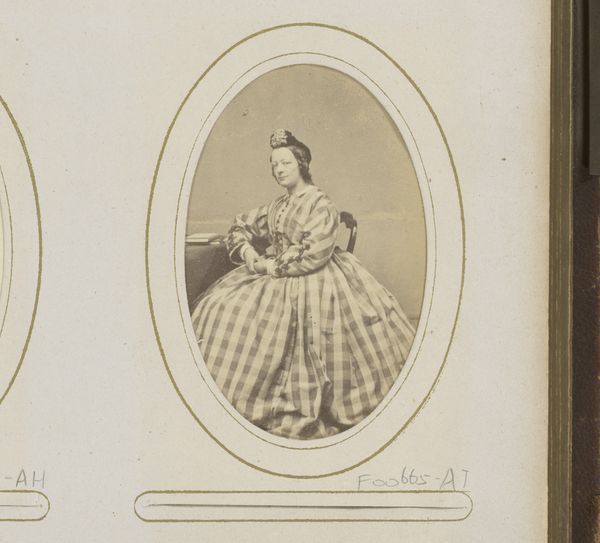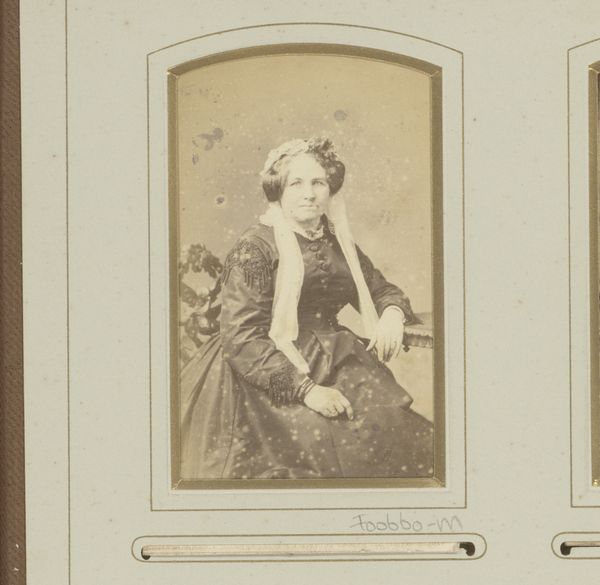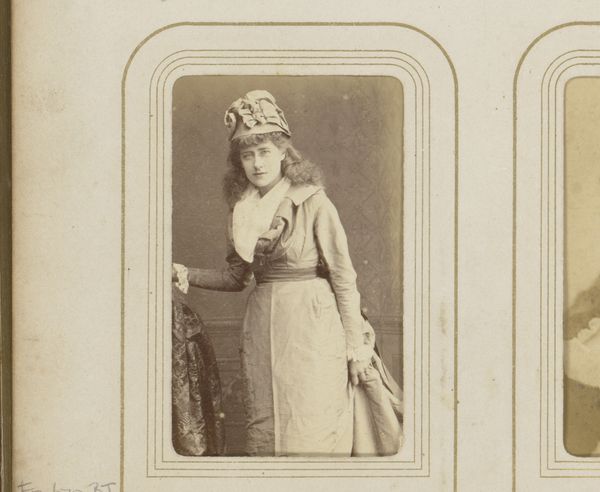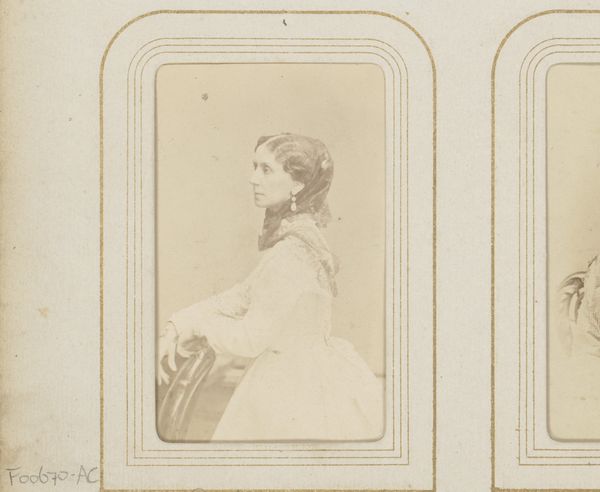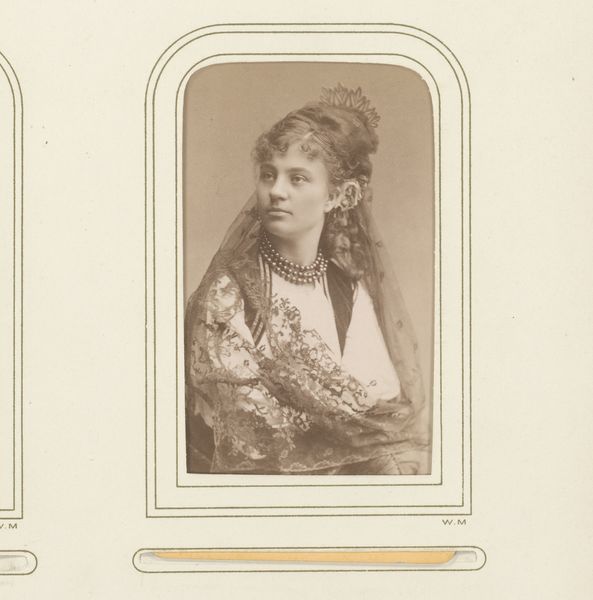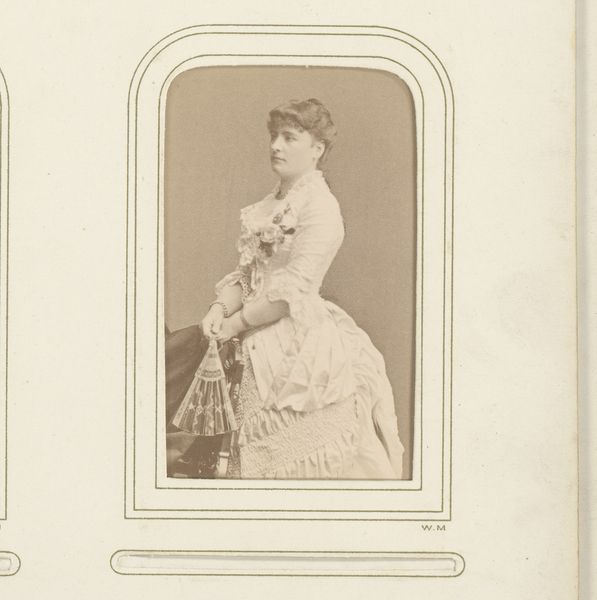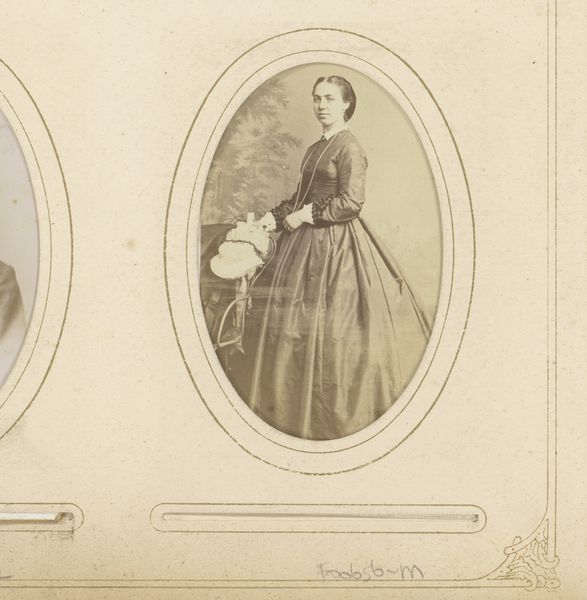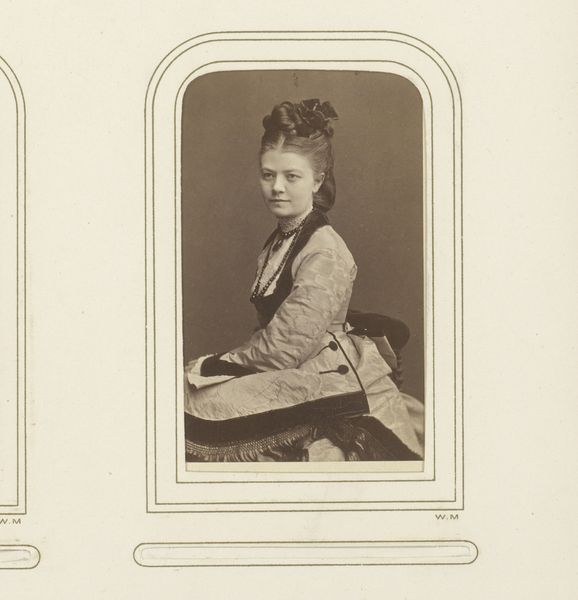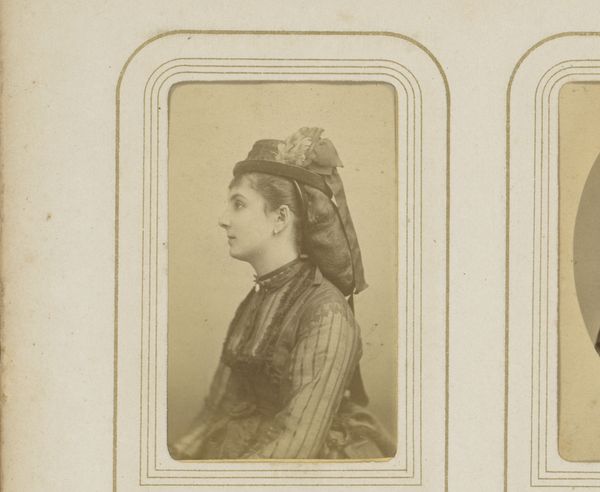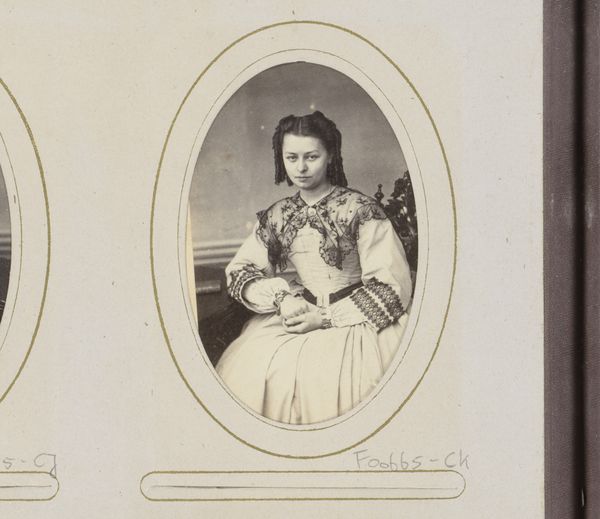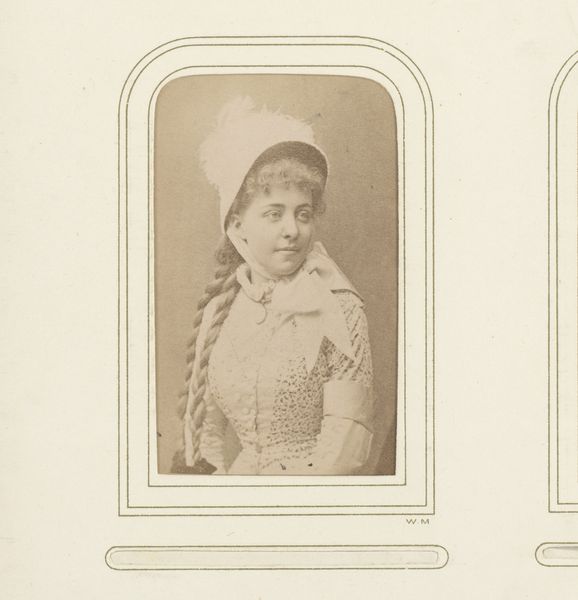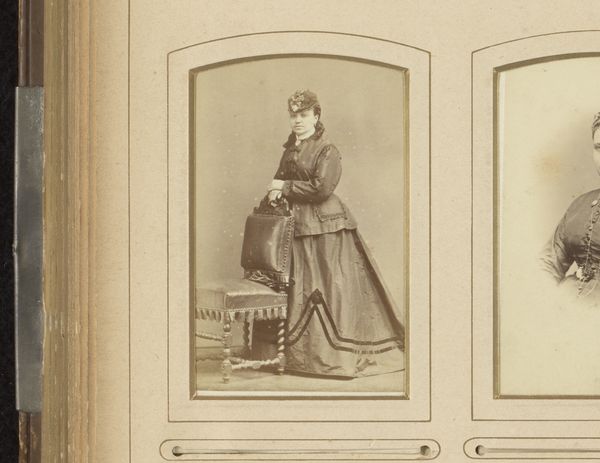
Dimensions: height 85 mm, width 51 mm
Copyright: Rijks Museum: Open Domain
Editor: We're looking at a photograph, "Portret van Clementine Swartz," dating roughly from 1860 to 1885 by Gösta Florman, held at the Rijksmuseum. It’s a striking portrait. There’s an almost theatrical air about the composition and her averted gaze. How would you interpret this work within the context of its time? Curator: That theatricality you notice is very much part of the cultural performance embedded within portraiture of this era. Consider that photography was relatively new. How do you think someone like Clementine Swartz and the artist Florman, saw the social and institutional function of a portrait like this? Editor: I imagine photography was viewed as both modern and as a means to solidify social standing, maybe to present an idealised version of oneself to the world? Curator: Precisely! Photographic portraiture allowed for a democratization of image production, while simultaneously reinforcing existing class structures. This is further complicated by the artistic movement of Pictorialism that can be observed here, with the soft focus emulating painting techniques. How might Pictorialism elevate or change the photograph’s function? Editor: So, it's almost mimicking fine art, to give the subject added legitimacy and prestige? In a sense, the image isn't just capturing a likeness but creating an idealized artistic representation intended for public display. Curator: Yes, which returns us to the idea of performance. Consider the pose, the dress, the lighting…everything works together to create a deliberate *representation*. Who do you think Clementine was hoping to be when the viewers were looking at the portrait? Editor: That’s fascinating! I hadn't considered how staged and constructed these seemingly straightforward portraits could be, and the power of a photograph to express the intended self. Curator: And how institutions like museums play a role in solidifying that historical narrative by preserving and exhibiting works like these. It highlights how art reflects and shapes social and cultural values. Editor: This really changes how I look at historical photography!
Comments
No comments
Be the first to comment and join the conversation on the ultimate creative platform.
